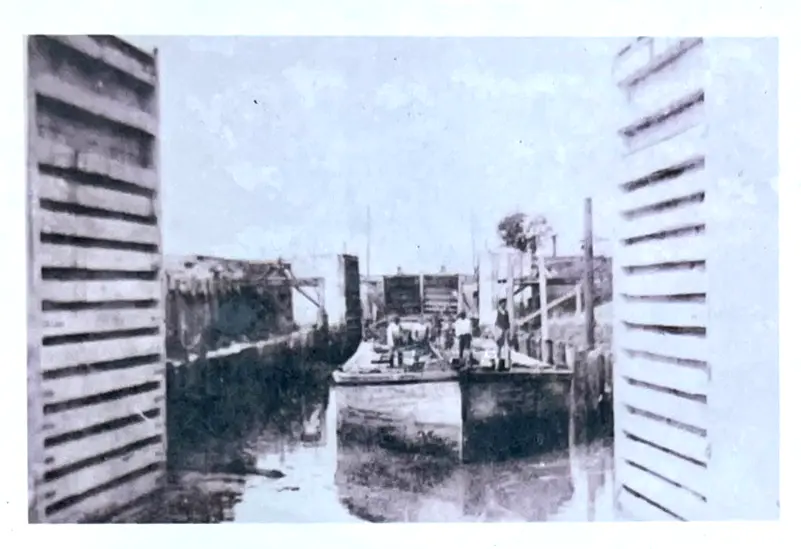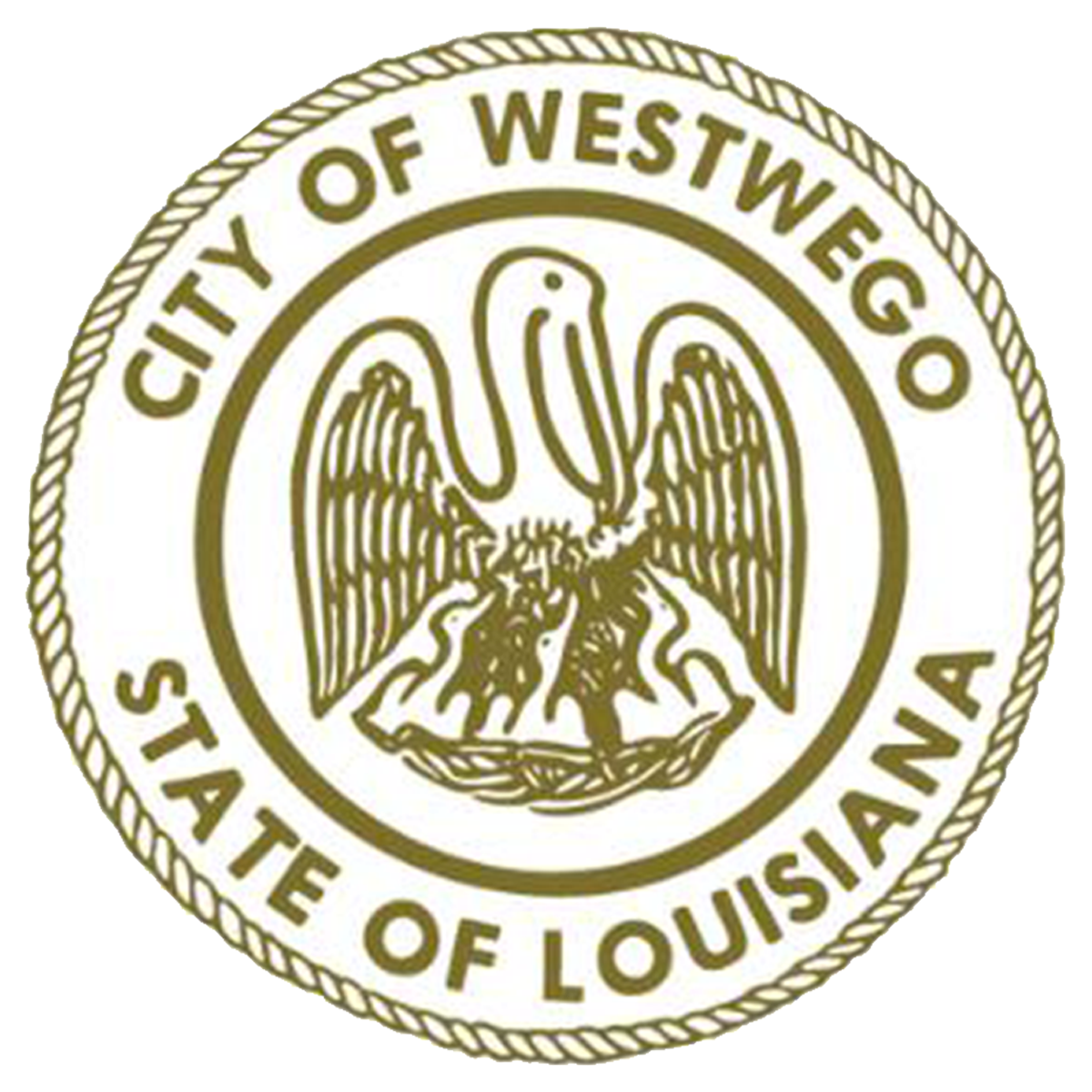Westwego Canal Locks

In the late 1700s, the canal that led to these locks was originally a narrow natural canal that was used by the Zeringue Plantation. It was later dug by hand to facilitate travel and trade. In 1841, it was again enlarged to 37 feet wide and 9 feet deep. Once enlarged, the waterway was used to transport vegetables and seafood to the New Orleans French Market.
The enlargement allowed paddlewheel steamboats to navigate the waterway to trade along the bayous. The first and second sets of locks, built in the early 1800s, were made of wood. In 1850, steel and concrete locks were built to replace the wooden locks. Boats passed through the locks 24 hours a day, requiring the presence of lock tenders and toll collectors.
The locks were closed circa 1930, and the Westwego Canal was filled in 1962. These massive concrete locks are located at the beginning of Sala Avenue next to the Lazy River Landing.
